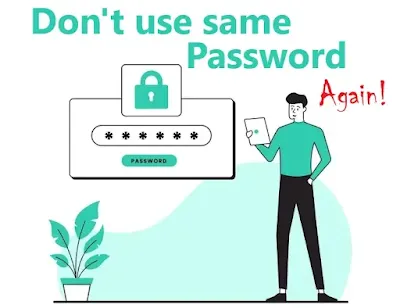Cyber-criminal behavior has become a big business. Just as businesses and organizations must be vigilant to prevent threats, individuals must also take steps to protect data.
A cyber-attack is a most common theft performed from one system or from a group of systems against one system or group of systems.
The main goal of the attackers is to either disable or destroy the target systems and gain the personal information of a user for personal gain.
Here we have listed some methods for cyber attacks and 5 ways to prevent cyber attacks.
- Malware: Short for "Malicious software," this category of software is typically downloaded when users inadvertently download infected or untrustworthy files or click on malicious advertisements. Malware is designed to carry out various harmful activities, including taking control of the victim's system and pilfering sensitive information

- Phishing: In a cyber-attack known as phishing, individuals pose as legitimate organizations or their representatives in an attempt to deceive victims into divulging crucial information, such as personal details and banking credentials, which can then be exploited for personal gain. Attackers typically employ various communication channels, including email, SMS, phone calls, and social media messaging. Users should exercise caution when engaging in such communications and carefully scrutinize any attachments they download.

- SQL Injection Attack: SQL, which stands for Structured Query Language. SQL Injection Attacks: is a type of attack that targets databases. Databases store vital information and are managed through SQL. Attackers employ malicious code to extract crucial data from the server. Once obtained, attackers use different codes to access information within the database, including usernames and passwords stored therein.

- Credential Reuse: Many people tend to use the same password for multiple accounts to simplify the process of remembering them. However, this practice increases the risk of multiple accounts being compromised instead of just one. It is strongly recommended to use unique passwords for different accounts to ensure that if one account is breached, the others remain secure.

- Cross-Site Scripting (XSS): In a cross-site scripting attack, malicious scripts are injected into web pages. Typically, these scripts are executed on the user's browser and can access sensitive data such as cookies, session tokens, and credentials. This information is then transmitted to the attackers, who exploit it for their own purposes. Additionally, attackers may employ this type of attack to undermine the credibility of a legitimate website.

- Denial of Service (DoS): In a DoS attack, assailants generate excessive network traffic, causing it to become overwhelmed and cease functioning. They inundate the target machine or server with an excessive number of requests that exceed its capacity. Once the targeted system becomes overloaded, it automatically shuts down, preventing legitimate requests from being fulfilled.

Credit: f5 - Session Hijacking and Man-in-the-Middle Attacks: As the name suggests, in these types of attacks, assailants illicitly access ongoing internet activities. Attackers hijack active sessions and collect all the information being exchanged. These attacks can target client/server sessions as well as person-to-person sessions.

Now we look at the ways using which you can prevent yourself from cyber attacks.
1. Make Sure to use new passwords regularly.
Many of us may have experienced a data breach at some point, making password reuse a risky practice. It's advisable to update your passwords regularly, with a monthly interval being an excellent choice. Additionally, it's wise to configure reminders on your personal devices to prompt you when it's time to change your password.
2. Create strong passwords using password generators and multi-layered authentication.
Passwords have to be strong and have personal significance, making them unique to only you and less susceptible to automated guessing. For instance, using different combinations makes a great challenge for AI scripts compared to passwords containing random numbers and letters. I strongly recommend adopting multi-layered authentication, which is exceptionally difficult to compromise. Additionally, password generators are valuable tools that enhance password security, and there are some excellent free options available.
3. Regularly update the applications installed.
Ensure that your devices are configured to automatically install operating system and application updates. Cybercriminals frequently seek out vulnerabilities in operating systems, viewing them as valuable opportunities to exploit when users are online. Using outdated operating systems or applications can leave you vulnerable to their attacks.
4. Make sure to have privacy everywhere:
Safeguarding and ensuring the privacy of all your accounts is of utmost importance. One of the five types of phishing attacks is spear phishing, which occurs when cybercriminals possess some information about you, often gleaned from your social media profiles.
If an individual has knowledge of your name, workplace, job title, email address, and other specific details, their phishing email may appear more convincing, making it easier for anyone to fall for it, as you might believe it to be genuine.
5. Remember to use VPN, antivirus, and security.
There are many programs available on the internet that will help you to prevent cyber attacks. VPN will help you to secure your IP address and will help you to protect your system.
Antivirus software will protect your computer from different attacks and will stop infections on the computer.
Security is a very major part of the computer, you need to have different security protocols to ensure prevention from cyber attacks.
Verdict:
Before looking into the ways to protect yourself from cyber attacks we suggest you first read about the cyber attacks. We have listed above 5 ways using which you can prevent cyber attacks.